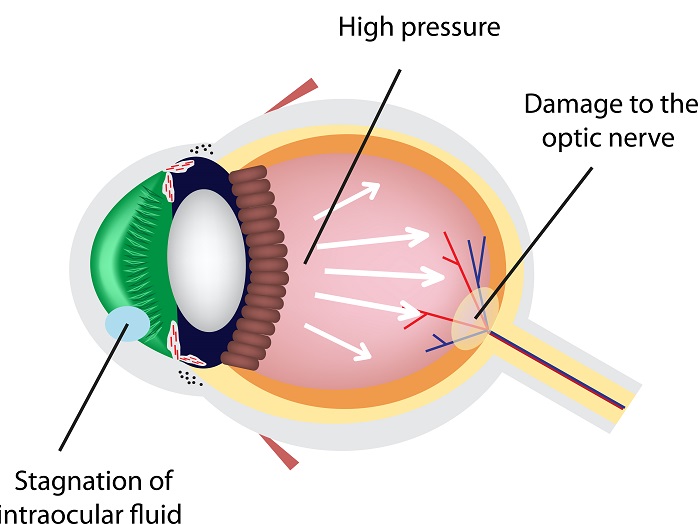Comprehending the Various Vision Correction Procedures Available for Clearer Sight
In the world of vision modification procedures, a multitude of options exist to resolve refractive mistakes and provide individuals with more clear sight. Let's check out the complexities of these procedures and shed light on the course to achieving improved vision clarity.
LASIK Surgical Procedure
LASIK surgery is a typical refractive procedure utilized to fix vision issues such as farsightedness, astigmatism, and nearsightedness - retina service near me. This medical method, which means Laser-Assisted in Situ Keratomileusis, intends to improve the cornea to enhance how light is focused on the retina, inevitably boosting vision quality. During the procedure, a thin flap is created on the cornea, and a laser is used to eliminate specific amounts of cells to improve it suitably. This reshaping permits light to be precisely concentrated onto the retina, dealing with refractive mistakes.
Among the primary advantages of LASIK surgical treatment is the quick enhancement in vision experienced by patients. Lots of individuals see a significant improvement in their vision immediately after the treatment. Additionally, most individuals report marginal discomfort and discomfort during the surgical treatment and recovery duration. The healing time for LASIK is fairly fast, with several individuals going back to their everyday activities within a day or 2 post-operation. On the whole, LASIK surgical procedure is a prominent option for individuals looking for a lasting remedy for their vision problems.
PRK Procedure
While likewise an usual refractive procedure, the PRK (Photorefractive Keratectomy) method differs from LASIK surgical treatment in its method to remedying vision problems. In PRK, rather than producing a flap on the cornea, the outer layer of the cornea, called the epithelium, is completely removed. This enables the laser to reshape the cornea to deal with refractive errors such as nearsightedness, farsightedness, and astigmatism directly externally.

In spite of the longer healing time, PRK can produce outstanding cause vision renovation, making it a beneficial option for those who might not appropriate prospects for LASIK surgery.
Implantable Lenses
In contrast to PRK where the cornea is improved directly, implantable lenses use another method for correcting vision by putting artificial lenses inside the eye. This treatment is particularly advantageous for individuals with high degrees of farsightedness, astigmatism, or nearsightedness that may not appropriate candidates for laser surgeries like LASIK or PRK.
Implantable lenses, also called phakic intraocular lenses, job by supplementing the eye's natural lens with a synthetic one. eyecare near me. These lenses can be positioned before the natural lens (former chamber) or behind the iris and before the all-natural lens (posterior chamber) By changing the power and positioning of these lenses, eye doctors can efficiently fix refractive mistakes and enhance visual acuity
One benefit of hop over to here implantable lenses is that they are removable and exchangeable, providing versatility for future adjustments. As with any kind of surgical treatment, there are dangers involved, such as infection or cataract development. Individuals considering implantable lenses should talk to an eye treatment expert to identify the most ideal option based upon their specific needs and eye health.
Corneal Rings
Corneal rings, also called intracorneal ring segments, are small, transparent gadgets put into the cornea to correct vision distortions such as keratoconus. Keratoconus is a condition where the cornea thins and bulges exterior, triggering vision to become distorted. The insertion of corneal rings helps to squash the cornea, enhancing visual skill and minimizing the uneven astigmatism caused by keratoconus.
The procedure for placing corneal rings is minimally invasive and reasonably fast, usually carried out as an outpatient procedure. During the surgery, the eye doctor makes a small laceration in the cornea and inserts the click site rings at a specific depth. As soon as in position, the rings assist to reshape the cornea, offering a smoother surface for light to go into the eye, which can lead to more clear vision.
Corneal rings are thought about a relatively easy to fix treatment, as they can be eliminated or changed if essential. eyecare near me. While they may not entirely eliminate the requirement for glasses or get in touch with lenses, corneal rings can substantially boost vision high quality and total aesthetic convenience for people with keratoconus or various other corneal abnormalities
Refractive Lens Exchange
Following the correction of corneal abnormalities with treatments like corneal rings, one more vision modification strategy that can resolve refractive mistakes is Refractive Lens Exchange (RLE) RLE is a medical treatment that includes replacing the eye's natural lens with a fabricated intraocular lens (IOL) to remedy refractive errors such as presbyopia, farsightedness, and nearsightedness. This procedure is specifically valuable for people that may not be appropriate prospects for treatments like LASIK or PRK because of aspects such as slim corneas or high refractive errors.

Final Thought
In conclusion, there are different vision adjustment procedures readily available to assist individuals attain more clear sight. LASIK surgical procedure, PRK treatment, implantable lenses, corneal rings, and refractive lens exchange are all choices that can address different vision problems.
In the world of vision modification procedures, a wide variety of alternatives exist to attend to refractive errors and offer people with clearer sight.LASIK surgical procedure try this is an usual refractive treatment used to deal with vision issues such as farsightedness, astigmatism, and nearsightedness.While likewise a typical refractive treatment, the PRK (Photorefractive Keratectomy) technique differs from LASIK surgical procedure in its strategy to dealing with vision problems.Adhering to the adjustment of corneal abnormalities with procedures like corneal rings, another vision modification strategy that can address refractive errors is Refractive Lens Exchange (RLE) LASIK surgical procedure, PRK treatment, implantable lenses, corneal rings, and refractive lens exchange are all options that can address different vision issues.